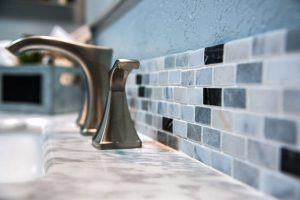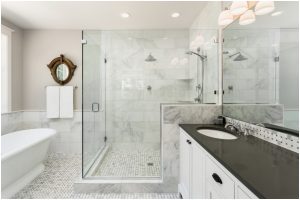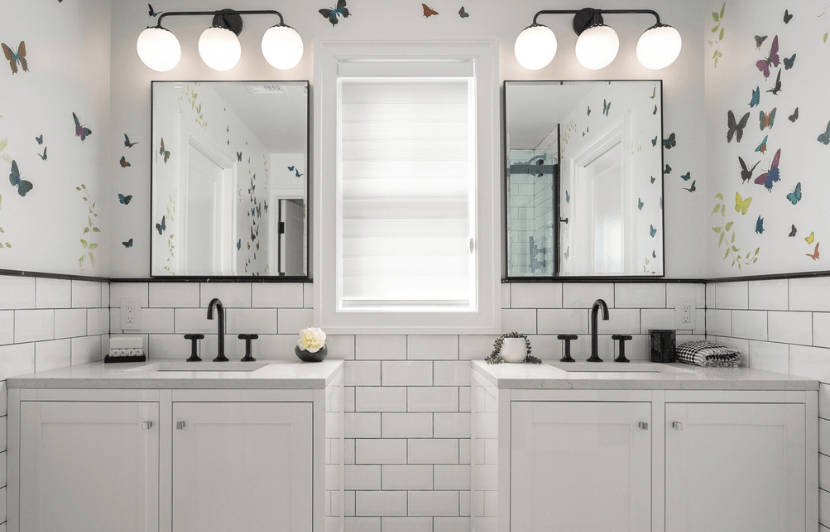Should Backsplash Match Shower Tile? Exploring the Design Options
Introduction
When it comes to designing a bathroom, the choices can be overwhelming. From the floor to the walls, every detail matters. One common dilemma that homeowners face is whether the backsplash should match the shower tile. While there are no strict rules, various factors come into play when making this decision. In this article, we’ll explore the considerations and offer guidance to help you create a cohesive and aesthetically pleasing bathroom design.
Factors to Consider
1. Overall Design Concept

Before delving into specifics, it’s crucial to consider the overall design concept of your bathroom. What style are you aiming for? Is it a modern, minimalist look, or do you prefer a more traditional and ornate design? The answer to these questions can guide your decision on whether the backsplash should match the shower tile.
2. Color Palette
The color palette of your bathroom is a key factor in determining whether the backsplash and shower tile should match. Matching tiles can create a harmonious and unified look, while contrasting tiles can add visual interest. Consider the existing colors in your bathroom, including the vanity, flooring, and wall paint. Opting for a complementary color scheme will ensure a cohesive and balanced design.
3. Tile Material
The material of the tiles also plays a significant role in the decision-making process. Different materials have distinct textures, finishes, and reflective properties. For instance, if you have a glossy ceramic tile in the shower, you might want to choose a matte or textured backsplash to create contrast. Conversely, matching materials can provide a seamless transition between the shower and the backsplash, creating a cohesive design.
Pros and Cons
Pros of Matching Tiles
1. Cohesive Aesthetic

One of the primary advantages of matching the backsplash with the shower tile is the cohesive aesthetic it creates. This design choice imparts a sense of unity and continuity in the bathroom, making it visually appealing and well-coordinated.
2. Easier to Coordinate Accessories
Matching tiles simplify the process of coordinating accessories and other design elements in the bathroom. From towels to soap dispensers, it’s easier to find items that complement the overall color and style when the tiles in the shower and on the backsplash are the same.
3. Perception of Space
Using the same tiles throughout the bathroom can contribute to the perception of a larger space. The continuity in design eliminates visual interruptions, creating a seamless flow that makes the bathroom appear more spacious and cohesive.
Cons of Matching Tiles
1. Lack of Visual Interest
While a cohesive look has its merits, matching tiles may result in a lack of visual interest. The bathroom design might appear too uniform or predictable, potentially missing the opportunity to incorporate contrasting elements that add character and uniqueness.
2. Limited Design Flexibility
Matching tiles can limit design flexibility, especially if you want to experiment with different patterns or textures. It might restrict your options when selecting a backsplash that could enhance the overall design by providing a complementary or contrasting element.
Alternative Approaches
1. Complementary Colors
If an exact match seems too uniform, consider choosing tiles that are in the same color family but with slight variations. This approach maintains a cohesive look while introducing subtle contrasts that add visual interest.
2. Contrasting Patterns or Textures
Introduce visual appeal by opting for contrasting patterns or textures between the shower tile and backsplash. For example, if your shower features large, sleek tiles, consider a smaller, textured backsplash to create a dynamic and visually engaging design.
3. Statement Backsplash
If you want to make a bold statement, choose a backsplash that stands out from the shower tile. This can be achieved by selecting a vibrant color, intricate pattern, or a completely different material. A statement backsplash adds personality to the bathroom without sacrificing overall cohesion.
Conclusion
In the end, the decision of whether the backsplash should match the shower tile boils down to personal preference and the specific design goals for your bathroom. While a cohesive look has its advantages, experimenting with complementary or contrasting elements can result in a more dynamic and visually interesting space. Consider the factors mentioned, weigh the pros and cons, and choose a design that not only suits your taste but also enhances the overall ambiance of your bathroom. Remember, there are no strict rules in design – it’s about creating a space that reflects your style and brings you comfort and joy.

